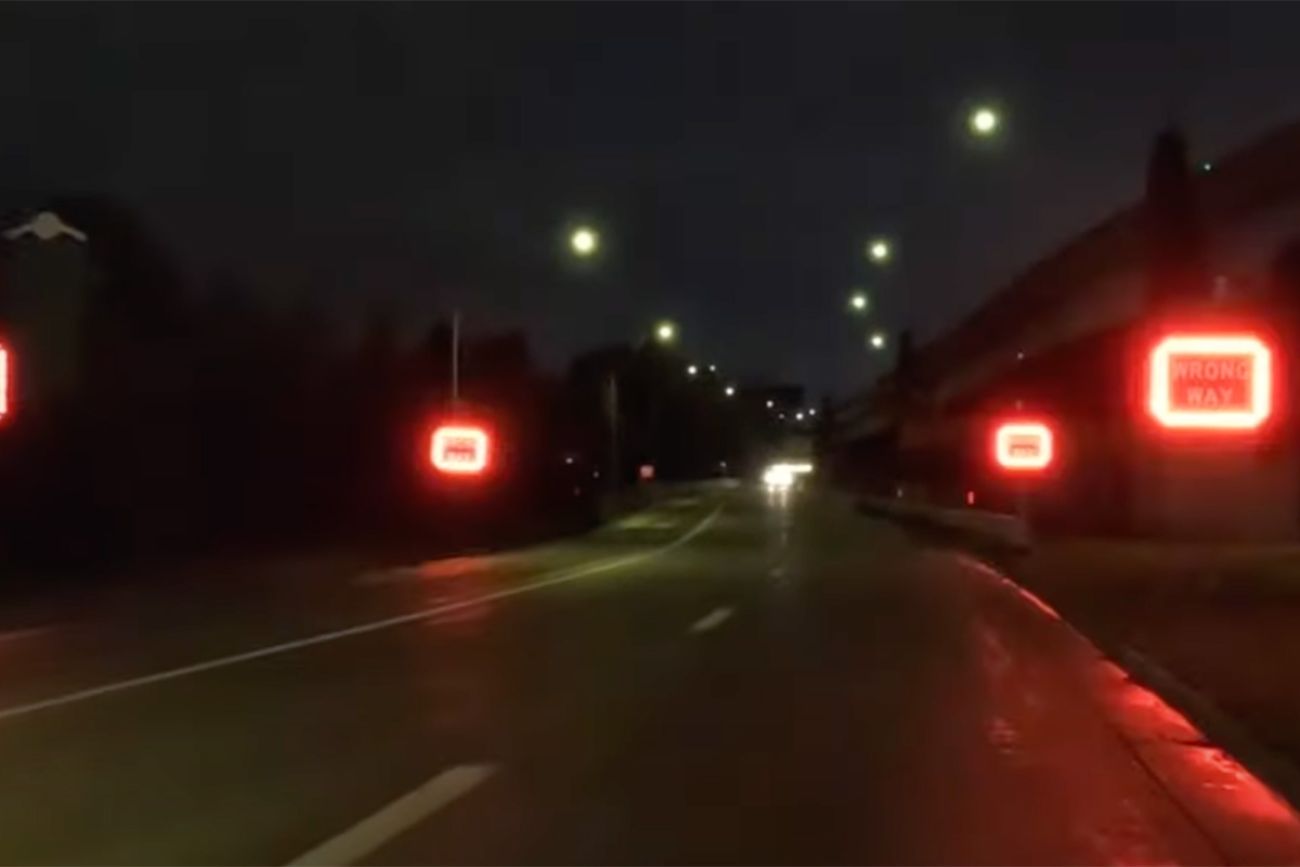West Michigan officials expanding use of wrong-way detectors to save lives

- Twenty new wrong-way detection systems are coming to U.S.131 in Grand Rapids by summer, an effort to reduce deadly collisions
- The systems immediately alert authorities when a driver enters the wrong freeway entrance ramp
- The systems are mainly in West Michigan for now but officials elsewhere in the state are watching
Hoping to avoid deadly collisions, Michigan transportation and police officials plan to add new wrong-way detection systems to a busy stretch of highway in Grand Rapids — an effort that transportation officials around the state are watching with interest.
The high-tech systems, attached to existing “Wrong Way” or “Do Not Enter signs,” automatically trigger lights and cameras whenever a driver tries to enter the highway using the wrong ramp. Drivers pulling onto an off-ramp will immediately see flashing lights alerting them to their potentially catastrophic error, police will be notified, and cameras will begin recording footage of the incident, allowing authorities to rule out false alarms.
“The issue is where the off-ramp is next to an on-ramp,” said John Richard, communications representative for the Grand Region of the Michigan Department of Transportation (MDOT). “So where they should have got on the on-ramp, they might accidentally get on the off-ramp, which is adjacent to the other ramp.”
Related:
- New toll system should cut wait times at Michigan bridges to Ontario
- Seatbelt use in Michigan declines. Experts blame pandemic bad habits
- Which judges, courts impose harshest penalties for drunk driving in Michigan?
The Michigan State Police, MDOT and Grand Rapids Police Department are making a major investment in these systems this year, with plans to install a total of 20 along U.S. 131 by next summer. The first two are already in place at the Ann Street and M-11 (28th Street) exits.
“It's the busiest road in West Michigan. In fact, it's the busiest road in all of Michigan outside of Detroit,” Richard said, adding that roughly 120,000 cars pass through this section of U.S. 131 daily.
Wrong-way detection systems are primarily in west Michigan for now but MDOT officials from northern Michigan and Metro Detroit said they are interested in learning how they will work in Grand Rapids and will evaluate their use in the future.
Richard wasn’t able to provide details about the costs of each system, but said the investment is worthwhile.
“It is a very cost-effective system because the crashes are so catastrophic and deadly that, if we can even prevent one of them, it will be worth installing the system,” Richard said.
In 2021, there were 421 wrong-way crashes in Michigan, seven of them fatal, according to data from the Michigan State Police. While wrong-way crashes slightly decreased to 407 in 2022, the number of fatal crashes increased to 10.
“When you’re talking about somebody literally going the wrong way down a roadway, especially a highway, now you’re talking about an extremely dangerous situation,” Grand Rapids Police Chief Eric Winstrom said in a statement.
“Whatever we can do to avoid that is important to us.”
Over the past few years, MDOT has placed more “Wrong Way” and “Do Not Enter” signs and have made them more visible by adding reflective strips, Richard said.
The new detection systems along U.S.131 will join two earlier systems installed on the busy Grand Rapids highway in 2021, at the Cherry Street and Hall Street interchanges. The systems are also in other West Michigan cities including Kalamazoo, where one was installed at the U.S.131 Wealthy Street exit in 2018. In Jackson, one has been installed off Interstate 94, and in Battle Creek, one is on the I-94 exit at Dickman Road.
MDOT and the state police don’t have data on how many times these existing systems have been activated since they were installed, said Michelle Robinson, a specialist lieutenant and the public information officer with Michigan State Police’s sixth post. Usually, she noted, drivers who are sober see the flashing lights and correct their mistakes.
Wrong-way crashes have been on the rise nationally. Between 2015 and 2018 there were 2,008 deaths from wrong-way driving crashes on highways, an increase of 34 percent compared to the four years prior, according to most recent data from the AAA Foundation for Traffic Safety.
Factors that contribute to wrong-way crashes include alcohol impairment and old age.
“A lot of these wrong-way crashes that we're seeing … it's not necessarily someone not knowing the freeway system,” Robinson said. “It's somebody that is intoxicated going the wrong way.”
Last year, there were three wrong-way, head-on collisions on U.S.131 between Ann Street and M-11, all involving alcohol, Robinson confirmed.
“If somebody is sober and makes a legitimate mistake, and they get on the wrong way and they start seeing vehicles coming towards them, they're going to correct their action as soon as possible,” Robinson added.
See what new members are saying about why they donated to Bridge Michigan:
- “In order for this information to be accurate and unbiased it must be underwritten by its readers, not by special interests.” - Larry S.
- “Not many other media sources report on the topics Bridge does.” - Susan B.
- “Your journalism is outstanding and rare these days.” - Mark S.
If you want to ensure the future of nonpartisan, nonprofit Michigan journalism, please become a member today. You, too, will be asked why you donated and maybe we'll feature your quote next time!




